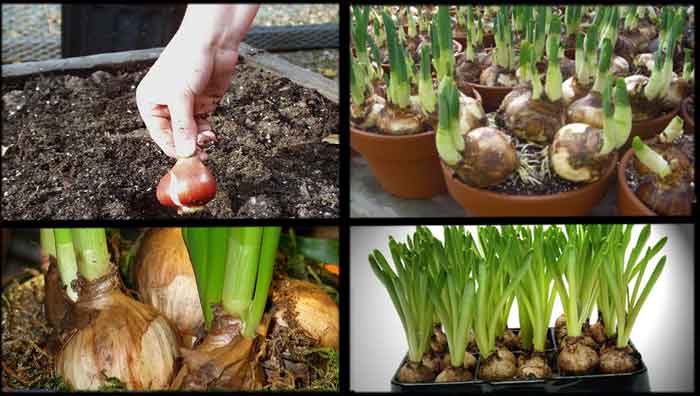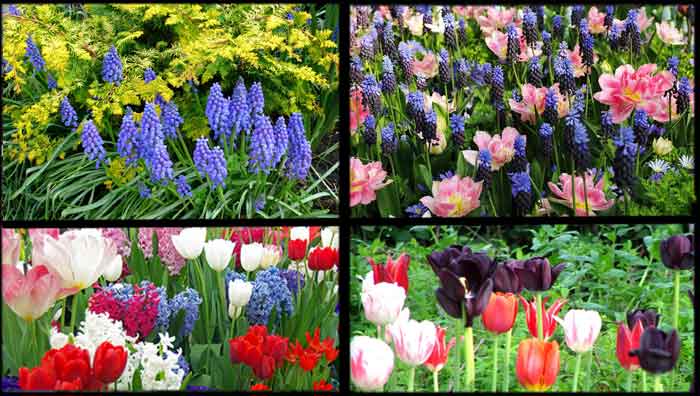|
|
Greetings
September Gardening Tips!
Rose Maintenance - This is the last month to prune roses and feed them for their last bloom cycle before going dormant. Hold off on severe pruning until plants are fully dormant in January, feed plants lightly, and water. Continue to water them only in the mornings to lessen mildew and other wet foliage at sunset with warm evenings disease problems.
Make sure all dead flowers and hips (seed pods) have been removed and give the roses a light clipping early, then fertilize and keep plants watered, they will bloom in October or early November, when the weather is a little cooler, and the flowers may rival their spring counterparts.
Bulb Season.
Bulbs probably will begin arriving at nurseries in late September. Tuck them here and there in the garden, and they will deliver delightful spring surprises. Some also can be massed, though it can be a lot of work planting them. One exception: easygoing ranunculus.
 |
|
The best bulbs for your special spots are the ones that will last from season to season in our warm climate. Many do not, including tulips and other Dutch bulbs. Tulips and crocus need about six weeks of cooling in the vegetable bin of the refrigerator before being planted. These cold climate bulbs will last one season and should be treated as annual flowers.
If you want staying power, stick with amaryllis, baboon flower, calla lily, small-flowered daffodils and narcissus, Dutch iris, freesia, homeria, ipheon, ixia, ixiolirion, lachenalia, Leucojum aestivum, moraea, nerine, Scilla campanulata, sparaxis and watsonia. These can be left in the ground and, although they go dormant for the summer, they will return each fall.
 |
|
Vegetables to try.
If you keep the seed moist, many vegetables will quickly sprout in the heat. (in our hot climate, this is the best time for sowing and transplanting heading types) Some to sow now: beet, broccoli, Brussels sprouts, carrot, cauliflower, celery, endive, garlic, kale, kohlrabi, leek, head and leaf lettuce, onion, pea, radish, spinach, Swiss chard and turnip. Just about any of these can be put in as transplants later in the month.
bok choy, cabbage, chard, chervil, chives, collards, kohlrabi, leeks, lettuce, parsley (the flat-leaf type is more winter-hardy than the curly one), parsnips, peas, white potatoes, radishes, spinach, and turnips.
 |
|
Sow or transplant two or three times the amount you would for spring harvest, as these overwintering crops will grow very slowly, and you'll harvest only a leaf or two a week from each lettuce plant. As some herbs reseed themselves, transplant them for overwintering either into the garden or indoors. Dill, especially, seems to germinate better this way, so take advantage of it. Seeds can be started either indoors or outdoors now.
Quite a few herbs make attractive edible house-plants, including both dark green and dark opal basil, chervil, chives, dill, mint, oregano, parsley (the flat-leaf type is hardier and more flavorful), rosemary, summer savory, sweet marjoram, and thyme. Sow the seeds thickly to guarantee good germination, as plants will grow slowly over the winter, and consequently less foliage will be available for recipes.
Visit our website and take advantage of our Flowers Selection Tool.
Click Here
Save Our Water Outdoor
Water your lawn 1 to 2 days a week instead of 5 days a week. Saves up to 840 gallons per week. As a general rule, lawns only need watering every 5 to 7 days in the summer and every 10 to 14 days in the winter.
- Check your sprinkler system for leaks, overspray and broken sprinkler heads and repair promptly.
- Use a broom instead of a hose to clean driveways and sidewalks.
- Avoid over fertilizing your lawn. The application of fertilizers increases the need for water. Apply fertilizers which contain slow-release, water-insoluble forms of nitrogen.
- Install a smart sprinkler controller that adjusts watering based on weather, soil type, amount of shade and plant type. Wireless rain sensors are a convenient way to save up to 30 percent on outdoor watering by automatically turning off your system when it rains.
- Outfit your hose with a shut-off nozzle which can be adjusted down to fine spray so that water flows only as needed. When finished, "Turn it Off" at the faucet instead of at the nozzle to avoid leaks.
-
- Water your plants in the early morning or evening to reduce evaporation and ineffective
- watering due to wind
- Mulch! Save hundreds of gallons of water a year by using organic mulch
- Around plants to reduce evaporation.
- Use low-angle sprinklers that produce droplets of water. Sprinklers that spray water high into the air or produce a mist lose water through evaporation.
- If you have a swimming pool, consider a new water-saving pool filter. A single back flushing with a traditional filter uses from l80 to 250 gallons or more of water.
 |
|
Save our Water Indoor
When washing dishes by hand, fill one sink or basin with soapy water. Quickly rinse under a slow-moving stream from the faucet.
- Wash only full loads of laundry and dishes this saves up to 50 gallons per week.
- Repair dripping faucets by replacing washers. If your faucet is dripping at the rate of one drop per second, you can expect to waste 2,700 gallons per year.
- Install a low-flow faucet aerator, which can cut water use in half. Water saved: 1 to 2 gallons per minute.
- Wash only full loads in the dishwasher. An efficient dishwasher usually uses much less water than washing dishes by hand.
- Use the minimum amount of water needed for a bath by closing the drain first and filling the tub only 1/3 full.
- Spend only 5 minutes in the shower. Saves up to 8 gallons each time or replace your showerhead with an ultra-low-flow version. Some units are available that allow you to cut off the flow without adjusting the water temperature knobs.
- Turn off the water while you brush your teeth. Saves up to 2.5 gallons per minute
- Talk to your family and friends about saving water.
Follow the link to learn on Water Conservation
http://www.lcra.org/water/Pages/default.aspx
|
Regards,
Oakridge Landscape, Inc.
|
|